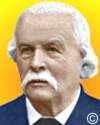
On 6 July 1817, Rudolph von Kölliker was born, one of the founders of embryology. With pioneering microscopic work on tissues, he identified the cell structure of tissues, that nerve fibres are elongated cells, and the cellular form of the egg and sperm. He also suspected that the cell nucleus was involved in heredity, but it was for others who came later to unravel that mystery. For much more background, read his obituary in the British Medical Journal, Rudolph Albert von Kölliker from 1905.

On 6 Jul 1885, French scientist Louis Pasteur and his colleagues began a series of injections to save a 9-year-old boy from a dreaded disease. Pasteur, a French chemist and a founder of microbiology, prepared important vaccines for several diseases. Today's book pick is: The Private Science of Louis Pasteur (Princeton Legacy Library), by Gerald L. Geison, a Princeton University history professor. In giving Pasteur the close scrutiny his achievements and their darker sides deserve, Geison’s book offers compelling reading for anyone interested in the social and ethical dimensions of science. Geison presents this unadorned truth after careful research from scrutinizing Pasteur’s private papers and laboratory notebooks, available only in recent years. This biography considers the complexities of science as it is actually created, instead of merely clinging to comforting and heroic myths.
It is available from Amazon, typically about New from $52.21. Used from $4.05. (As of earlier time of writing - subject to change.)
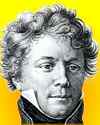 | Nature becomes fertile only by virtue of laws that oblige matter to organize itself into one of a number of necessarily very simple primitive forms. Because of their very simplicity, these are capable of constituting the basis for increasingly complex bodies, by the addition of organs calculated according to identical laws of possibility. |
 | I observed on most collected stones the imprints of innumerable plant fragments which were so different from those which are growing in the Lyonnais, in the nearby provinces, and even in the rest of France, that I felt like collecting plants in a new world… The number of these leaves, the way they separated easily, and the great variety of plants whose imprints I saw, appeared to me just as many volumes of botany representing in the same quarry the oldest library of the world. |
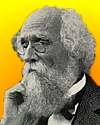 | It is true that the trees are for human use. But these are aesthetic uses as well as commercial uses—uses for the spiritual wealth of all, as well as the material wealth of some. |
| Before you look at today's web page, see if you can answer some of these questions about the events that happened on this day. Some of the names are very familiar. Others will likely stump you. Tickle your curiosity with these questions, then check your answers on today's web page. | |
| Births | |
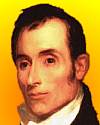 | Alexander Wilson, born 6 Jul 1766, was a Scottish-born American naturalist and poet whose pioneering work in 9 volumes, (1808-14), established him as a one of the foremost naturalists of his time. What was the subject of his 9 volume work which made him one of the founders in this field? |
 | Antoine de Jussieu, born 6 Jul 1686, was a physician and botanist who wrote many papers on human anatomy, zoology, and botany, including one on the flower and fruit of the coffee shrub. What was this botanist's nationality? |
| Deaths | |
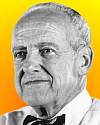 | Nathaniel Wyeth (1911-1990) was a US chemist and inventor, brother of distinguished American painter Andrew Wyeth. In 1973, a patent was issued to him for a beverage bottle plastic that was the first plastic strong enough to hold highly pressurized carbonated beverages without bursting. What is the common name of this plastic? |
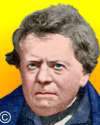 | A German physicist (1789-1854) showed by experiment (1825) that there are no “perfect” electrical conductors. He stated “If the given temperature remains constant, the current flowing through certain conductors is proportional to the potential difference (voltage) across it.” Can you name this scientist? |
| Events | |
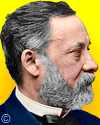 | On 6 Jul 1885, French scientist Louis Pasteur and his colleagues injected the first of 14 daily doses of rabbit spinal cord suspensions containing a progressively inactivated virus into 9-year-old Joseph Meister who was at risk for a certain infection. The immunization was successful. The boy grew up and became caretaker at the Pasteur Institute. The vaccination was designed for protection against which virus? |
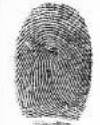 | On 6 Jul of a certain year, John Walker's fingerprints were the first ones to be exchanged by police officials in Europe and America. Law enforcement units in London and St. Louis, MO. completed the exchange. In which decade did this international exchange of fingerprints take place? |
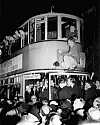 | On 6 Jul of a certain year, the last London tram ceased operation when it arrived outside New Cross depot. Large crowds had witnessed it travel along its route. Trams began service in London in the early 1900s, but had come to be regarded as too noisy and dangerous. They were replaced with electric trolleybuses which needed no tracks. In which decade did this last London tram make its last trip? |
Fast answers for the previous newsletter for July 5: the dating and interpreting of past events by the analysis of tree rings • Robert Fitzroy • Phineas Taylor • platinum • Scotland.
 If you enjoy this newsletter, the website, or wish to offer encouragement or ideas, please send feedback by using your mail reader Reply button.
If you enjoy this newsletter, the website, or wish to offer encouragement or ideas, please send feedback by using your mail reader Reply button. Your click on a Facebook, StumbleUpon, or other social button on the site webpages is also a welcome sign of appreciation. Thank you for using them.
© This newsletter is copyright 2020 by todayinsci.com. Please respect the Webmaster's wishes and do not put copies online of the Newsletter — or any Today in Science History webpage. (If you already have done so, please remove them. Thank you.) Offline use in education is encouraged such as a printout on a bulletin board, or projected for classroom viewing. Online, descriptive links to our pages are welcomed, as these will provide a reader with the most recent revisions, additions and/or corrections of a webpage. For any other copyright questions, please contact the Webmaster by using your mail reader Reply button.
--
If you do not want to receive any more newsletters, Unsubscribe
To update your preferences and to unsubscribe visit this link
Executive Real Estate Business Class
-
"It was like a man with wings. It wasn't like anything you'd see on TV or in a monster movie." ...
About the publisher
Search This Blog
Blog Archive
-
▼
2020
(1542)
-
▼
July
(200)
- PHOTOGRAPHY: The danger of documenting sharks
- Meet The Serial Killer Who Ate His Victims Because...
- The Roundup Top Ten from History News Network
- On This Day for July 31 - Lunar Roving Vehicle fir...
- Newsletter for Friday 31 July.
- Lockdowns killing more children than COVID + Docto...
- YOUR WEEKLY ESCAPE: Revisiting an iconic Nat Geo c...
- July 31: The Pilgrim Fathers Depart and the Battle...
- ANIMALS: The dog that got COVID-19
- On This Day for July 30 - Death of Otto von Bismar...
- Newsletter for Thursday 30 July.
- Frontline Docs 2nd Video Press Conf at SCOTUS We h...
- BREAKING NEWS: First U.S. dog to test positive for...
- July 30: First Defenestration of Prague, the 1st O...
- Demystified: Why Do Wolves Howl?
- The Champs Are Back on Forged in Fire Tonight
- SCIENCE: A rush to Mars during a rough patch at home
- Breaking News from History News Network
- On This Day for July 29 - National Aeronautics and...
- Newsletter for Wednesday 29 July.
- All Social Media Censor Frontline Docs COVID Video...
- July 29: Spanish Armada Scattered and Taft's Secre...
- TRAVEL: How to stay safe if you need to travel
- On This Day for July 28 - Beginning of World War I...
- Newsletter for Tuesday 28 July.
- Video Presentation from Washington Summit: America...
- July 28: Robespierre Guillotined, Austria-Hungary ...
- HISTORY: How the vice presidency became critical
- Enjoy Summer with Nat Geo Kids Magazine
- New This Week on History News Network
- On This Day for July 27 - Terrorist attack at Atla...
- Newsletter for Monday 27 July.
- COVID Propaganda & Tyrannical Edicts Affecting Men...
- July 27: Walter Raleigh Brings Tobacco, the Atlant...
- FAMILY: Can you transfer your ‘retro fun’ to your...
- The 10 greatest discoveries made by the British pu...
- On This Day for July 26 - Suez Canal seized, John ...
- Newsletter for Sunday 26 July.
- CDC says actual # of cases is up to 13X higher tha...
- July 26: 1st Muslim Civil War, Pizarro's Royal Cha...
- The Compass: Greece
- On This Day for July 25 - American advance into Ca...
- Newsletter for Saturday 25 July.
- VIRUS UPDATE: What does COVID-19 do to a child's b...
- July 25: The 1st Steam Locomotive, Mussolini Dismi...
- PHOTOGRAPHY: The photo that shocked a nation
- This Hardened Blob Of Nuclear Waste Could Kill You...
- On This Day for July 24 - Beginning of Mata Hari's...
- The Roundup Top Ten From History News Network
- Newsletter for Friday 24 July.
- Medical Journal: make the vaccine Mandatory! + Fre...
- YOUR WEEKLY ESCAPE: The man who claims to be Jesus...
- July 24: Cartier Lands in Canada, Mary Queen of Sc...
- ANIMALS: Let’s not forget this other catastrophe
- Demystified: Are Dogs Really Color-Blind?
- On This Day for July 23 - Egyptian monarchy topple...
- Newsletter for Thursday 23 July.
- listen to Dixie Brogdon Hopson tells how the hospi...
- July 23: Upper and Lower Canada United and the Bre...
- SCIENCE: The joy of vintage comforts
- A Puzzling Challenge on Forged in Fire Tonight
- Explore King Tut's tomb with National Geographic H...
- Breaking News from History News Network
- On This Day for July 22 - Deng Xiaoping reinstated...
- CDC Knows Masks and other methods don't work to st...
- Newsletter for Wednesday 22 July.
- July 22: First Congress of Vienna and Spoonerism
- TRAVEL: When tourism returns will it be better?
- Enjoy Summer with Nat Geo Kids Magazine
- On This Day for July 21 - Egyptians defeated in th...
- Newsletter for Tuesday 21 July.
- July 21: 1st Battle of Bull Run, the Trans-Siberia...
- HISTORY: John Lewis always stood for the same thing
- New This Week on History News Network
- On This Day for July 20 - First Moon landing, Sir ...
- Newsletter for Monday 20 July.
- What Scientific Study Shows 6 feet distance or "ma...
- July 20: On This Day in History
- FAMILY: Searching for patience
- Anne of Cleves: Henry VIII's most successful queen?
- On This Day for July 19 - U.S. women's suffrage mo...
- Newsletter for Sunday 19 July.
- Mask Truth Part 2, Data by Nations shows Hydroxych...
- July 19: 1st US Women's Rights Convention and V fo...
- The Compass: Colombia
- On This Day for July 18 - Publication of Mein Kamp...
- Newsletter for Saturday 18 July.
- Enough! Mask Truth, re-Creating you! the intended...
- CORONAVIRUS SPECIAL EDITION: What type of person d...
- July 18: Spanish Civil War Begins and 7 Years of K...
- PHOTOGRAPHY: Showing a nation losing its drinking ...
- How Julia Child Went From World War 2 Spy To Belov...
- Introducing Expedition: Learn! A New Way to Help K...
- The Roundup Top Ten for July 17, 2020
- On This Day for July 17 - Beginning of the Spanish...
- Newsletter for Friday 17 July.
- July 17: Execution of the Romanovs and a Stormy Bi...
- YOUR WEEKLY ESCAPE: An intimate look inside a mode...
- ANIMALS: The trouble with 'retired' chimps
- Man vs. 800-Pound Beast! Watch New Episode of Alon...
-
▼
July
(200)
-
Blogroll
-
About
HistoryFact










0 comments:
Post a Comment